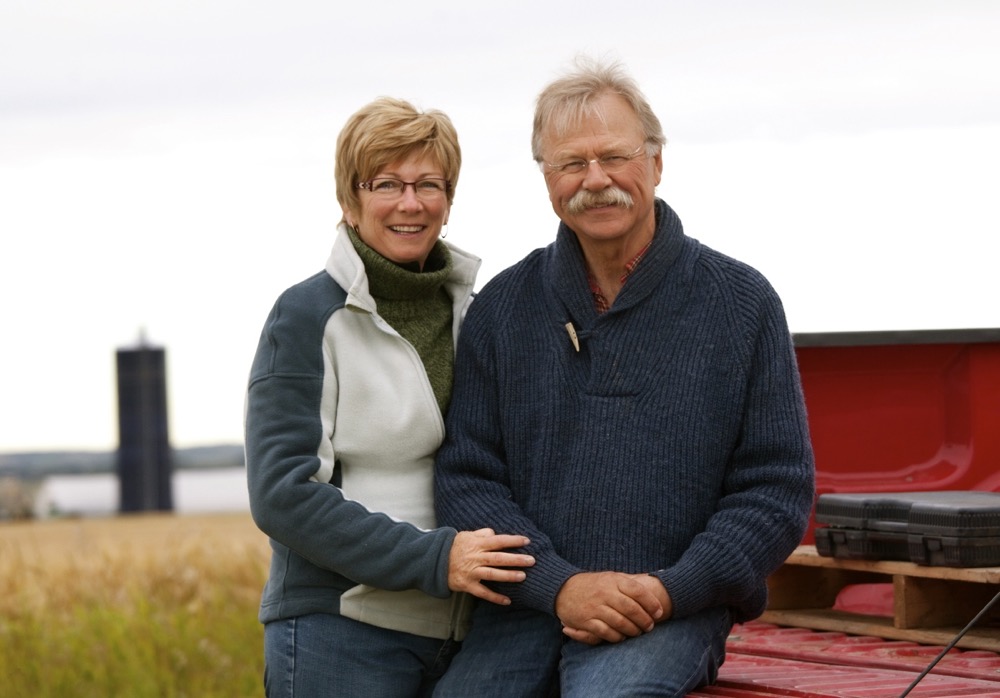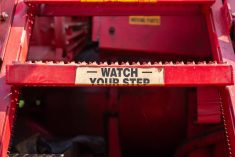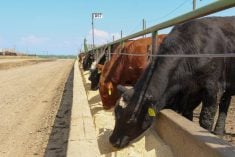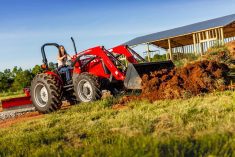A couple we’ll call Jack and Susan, ages 56 and 54, respectively, farm 2,240 acres in central Manitoba. The third generation of their family to farm in Manitoba, they began three decades ago with 640 acres and expanded by renting an additional 1,600 acres of cropland. About 15 years ago, they incorporated their grain production operation. Today, the farm is profitable, but structurally it is complex. Their issue is generational change — how to give property to their six children while holding taxes down and structuring their own retirement income.
Their eldest child, a daughter, is married to a local tradesman and owns 160 acres of her own. Three sons whose ages range from 22 to 32 want to farm part time. The eldest son rents 320 acres of cropland and uses the parents’ equipment to farm it. Two other children are married to local farmers.
Read Also

Gentle treatments for pain in the neck
Heading toward year-end, people unknowingly tense up against the cold and busyness, causing neck pain that can often be treated with appropriate support and gentle mobility, athletic therapist Kathlyn Hossack says.
The problem now is to split four quarters into six equal legacy shares while still providing a comfortable retirement for Jack and Susan. As well, all parties, especially the parents, agree that minimizing taxes is an important goal.
Don Forbes and Erik Forbes of Forbes Wealth Management Ltd. in Carberry, Manitoba, worked with Jack and Susan to make the combined shift of ownership and a retirement plan compatible and tax efficient.
The plan
“We can look at the farming operation and its related financial assets as three major value pools to generate future income,” Don Forbes explains. “The goal will be to pay income tax in a range of 26 to 33 per cent every year rather than attempting to defer the maximum amount of income tax until Jack and Susan pass away when the estate would face taxes that, at current rates, would be 50 per cent or more.
The first pool of value is the personally owned farm land. Its gains in value can be offset by the $1,000,000 Personally Owned Farm Land Capital Gains exemption to which both parents, acting as co-owners, are entitled. There is also a 100 per cent exemption on their personal residence including one acre. That is a $300,000 value duly exempted. Thus the first $2.3 million of capital gains on the farm property and home will be tax free, Erik Forbes explains.
Each farming parent can transfer land to the next generation at any price between book value and today’s market value. This includes any land, equipment and/or inventory, Don Forbes notes. The goal is to use up all tax credits and tax exemptions while not claiming the entire value of the farm and having to pay tax on it as of the date of transfer.
The package of assets will have a transfer price of book value plus the $2.3 million capital gains tax exemption. Any remaining taxable gain would be deferred to the respective future owners through a lower notional purchase price. The result will be a tax-free transfer of farming assets to the six children.
The time frame for the land transfer and for the retirement of Jack and Susan, who are only in their mid-50s, is quite long. Handing the land over to the children could be imprudent, for they could run into financial difficulties and have to sell land to pay creditors. Thus it is prudent to take back a zero per cent interest promissory note on the land given to each child. Creditors or an estranged spouse could try to seize assets, but it would be necessary to pay the parents before their claims could be adjudicated. This process results in a transfer of title to the land to each child but allows final control to be exercised by the parents, Don Forbes explains.
The family farming corporation is a more difficult problem. As a family farming corporation, favourable farm transfer rules apply. The shares can be transferred to the children active in farming at any price calculated between book value and today’s market value. Any deficiency in value and any tax liability is assumed by the new owner.
The alternative is to have the farming corporation classified as an investment holding company. On the death of the parents, all assets would be valued at current market prices and taxes paid. An estate freeze could be applied. The method is to value the common shares and convert them to fixed price preferred shares. Any future increase in the equity value of the corporation then flows to the common shares issued to the children while the parents’ value remains fixed in the preferred shares.
There is a third asset pool, namely life insurance policies. A Term to 100 term policy with a $1 million death benefit has level premiums and will pay out on the death of the final parent. All life insurance proceeds, which are viewed as the property of the beneficiaries, are paid tax free.
Apart from the farm and life insurance, Jack and Susan have registered assets. Each has an RRSP. Jack’s RRSP, with a present value of $70,100, can grow to $118,000 in nine years with no further contributions assuming a six per cent average annual gain. Susan’s $58,300 of RRSP value will grow to $98,000 in nine years. The combined value of the two accounts, $216,000, could provide $15,350 per year or $1,280 per month for the thirty two years from Jack’s age 65 to her own age 95.
The couple has tax free savings accounts with a present, combined value of $62,385. Assuming that Jack and Susan each add $8,000 a year for the next nine years, providing both a catch up and then making use of the present annual contribution limit, their currently underfunded TFSAs will grow to $289,260 and support payouts of $19,375 per year or $1,615 per month for the next 32 years.
After retirement
Assuming that Jack and Susan retire in nine years, Jack will get Old Age Security of $6,942 per year or $ 579 per month at 2017 rates and Susan a like sum two years later. Their estimated Canada Pension Plan benefits will be about $300 per month each, again at 2017 rates. Their RRSPs will pay them $1,280 per month. Their TFSAs will generate $1,615 per month. The farm property will generate a combined $1,660 per month and the land rent $1,250 per month. The sum of these income components, $7,563 per month, will be sufficient after splits of eligible pension and property source income taxed at an estimated Manitoba tax with age and pension benefits and a 18% tax rate, to provide $6,200 per month. That would more than cover estimated living costs of $5,000 a month, Erik Forbes estimates.
There are unknowns in these calculations. We have used 2017 values and a six per cent rate of return for financial assets, though inflation before Jack is 65 in nine years and in the following three decades could make an adverse change in their ability to support costs. There are no provisions for long term care or critical illness costs. These can be partially covered through low cost supplemental health insurance, which Jack and Susan should consider, Don Forbes notes.
On balance, the steps taken to realize and fix the farm values, to transfer ownership to the children, and to provide a retirement income to the parents are conservative. Moreover, the parents will retain their farm home and could sell it for what would probably be appreciated price in future, Don Forbes notes.















